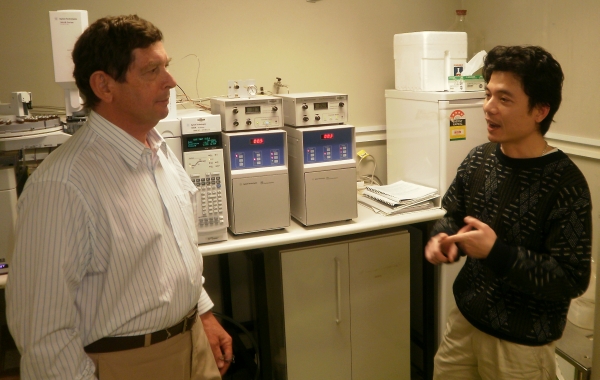Poultry CRC PhD student Mr Hung Viet Le recently travelled to San Francisco to present a paper entitled Stability of volatile sulfur compounds (VSCs) in sampling bags – Impact of temperature. “The paper contained a segment of the results of my PhD research which is sponsored by the Poultry CRC”, Hung said. The paper was presented at the 5th International Water Association’s Specialised Conference on Odour and Air Emissions, held in conjunction with the 10th Conference on Biofiltration for Air Pollution Control.
Hung observed a common theme throughout his time in the US; that odour complaints remain a major challenge for intensive agricultural facilities such as animal feeding operations (poultry, piggeries and feedlots), and activities like waste water treatment plants or industrial composting. “This was especially serious in regions with diminishing buffer zones between these types of facilities and residential areas”, he added. Interestingly, Hung noted, odour impacts from poultry broiler sheds tend to be higher when atmospheric conditions are categorised as stable or neutral.
In terms of his own research, Hung said that there have been some standardised protocols for volatile organic compound (VOC) odour sample collection, but that H2S (Hydrogen Sulphide) was still considered the surrogate compound for sulfur odour measurements. In many cases, however, it has been acknowledged that H2S cannot be relied upon as the sole indicator of odour in odour assessment. “Many papers and delegates noted that, in terms of odour assessment, other volatile sulfur compounds (mercaptan, sulfides, poly-sulfides) needed to be seriously considered.”
Currently, the predominate methods for odour mitigation of VOC odorants in industry are through the use of biofiltration, biotrickling filters, or activated carbon. However, these methods introduce additional costs to producers in terms of energy consumption and maintenance, with little to no return on investment. “Another problem with these methods can be the formation of unwanted by-products, such as the greenhouse gases NH3 and N2O, that require further treatment”, said Hung.
Hung continued, “As previously mentioned, use of odour treatment methods such as biofiltration, biotrickling filter or activated carbon can introduce more cost in terms of energy and maintenance. Further study is needed into possible correlations between odour emissions and the food used in poultry sheds, as well as microbial activities in poultry manure. Results can then be used to establish effective odour mitigation schemes at the very source of odour emissions”.
Through research such as Hung’s the Australian poultry industry will have greater capacity to analyse volatile sulfur compounds in order to obtain accurate odour assessment results. This will in turn lead to more effective odour management strategies for poultry sheds. “By learning from the experience of overseas poultry shed operations we can better manage odour emissions during the planning stages of future expansion/development.”
Hung concluded by saying that “I am grateful to the Poultry CRC for allowing me this opportunity. The conference gave me a chance to meet and exchange ideas with many people in the field of odour sampling/assessment, modelling, management/treatment, which is the main topic of my PhD research”.


